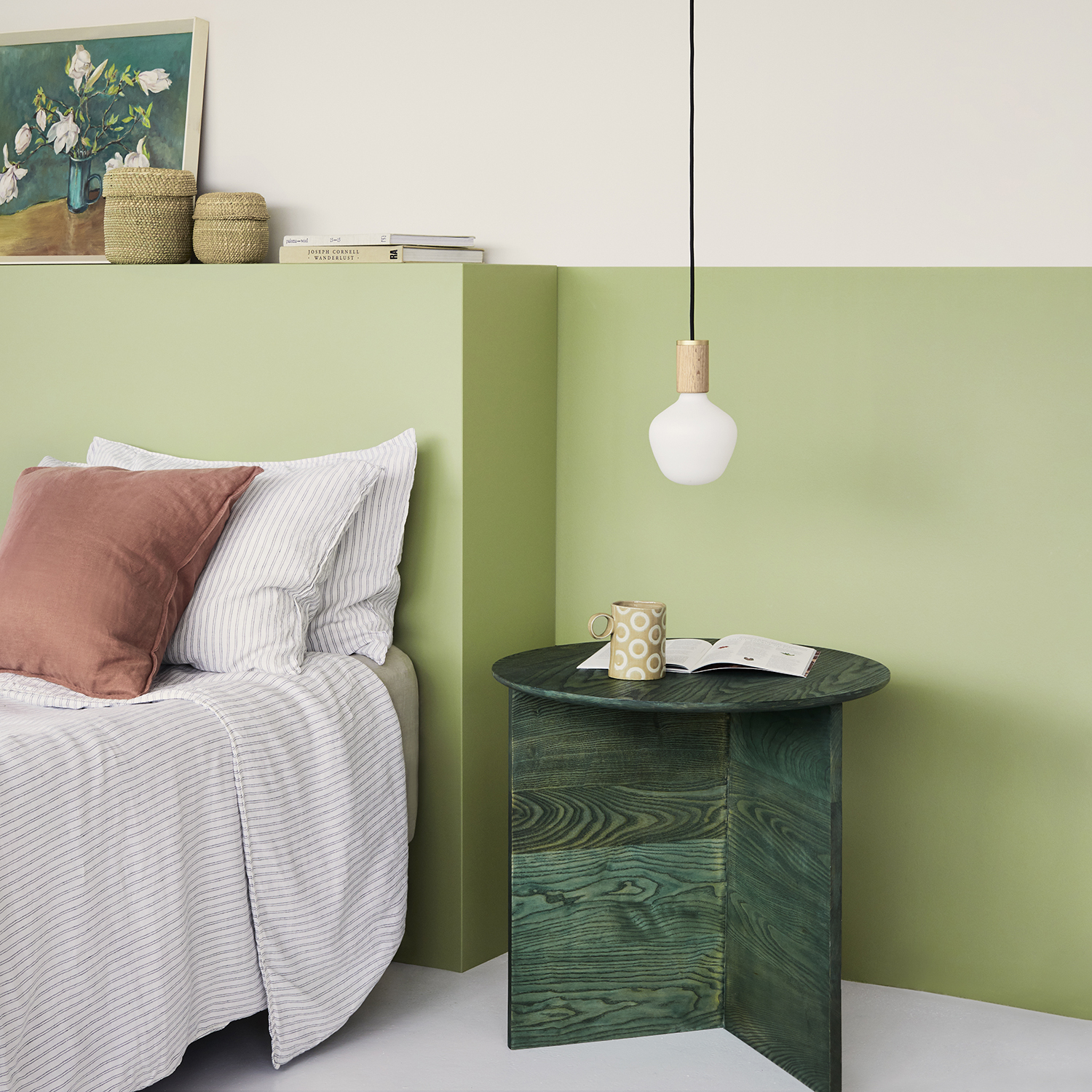How to make your home more soothing by choosing just the right decor
Writer JN Benjamin's SPD diagnosis meant she needed to make her surroundings as calm as possible, learning lessons from interior designers we can all take inspiration from


I first noticed the way interior design affects me when i was in secondary school. Mr. Gall’s Geography room was nauseatingly chaotic. Display work created by fellow students, maps of the world, volcano diagrams, flag charts and other educational posters all but covered every inch of magnolia painted wall space from floor to ceiling. It gave me a peculiar kind of headache. But it was the 1990s and dialogue about neurodivergence was scant. Where it existed, so too existed huge stigma around the subject.
At the time I didn’t have the words to describe what was going on in my brain so I survived by misbehaving to the point of getting sent out of the lesson - backchat was usually my weapon of choice. Ironically, I’d often be sent to the ‘reading workshop’ - a space for students with special educational needs that was decorated with low lighting, clear walls, and a blissful silence. in hindsight, all the signs of a cognitive issue were there, but it would be more than two decades before I was formally diagnosed with sensory processing disorder (SPD).
SPD relates to sensory reactivity and is categorised as processing stimuli in a way that is different from what is considered typical in the general population. The condition is heavily associated with autism - many people with SPD are also autistic. But even though it is listed only in the diagnostic criteria for autism, studies show it is very common across a spectrum of neurodevelopmental conditions - including ADHD, dyslexia and dyspraxia.
For me the effect of SPD is not just peculiar headaches, my sensory system is profoundly sensitive: I can hear a dripping tap from 30 feet away; and, forever confused - for example, I hear what I see and I physically feel what I hear. It’s incredibly exhausting to have no control over what your brain decides to process.
Dr Teresa Tavassoli, Assiciate Professor of Psychology at the University of Reading conceptualises sensory reactivity in line with the DSM-5, which lists three categories: hyper-reactivity is a strong or aversive reaction to sensory stimuli in an environment that many people would find unremarkable. hypo-reactivity is the opposite - a person with a sensory profile where this is dominant will tend to have a slower response - or no response at all. meanwhile sensory seeking is a fascination with sensory stimuli. somebody with a dominant sensory seeking profile may really enjoy watching the washing machine go round, or have a fascination with lights.
Having SPD is easier to navigate as an adult because I have a much better understanding of how the condition presents itself and also what steps I can take to effectively manage it. I can usually choose to leave offending spaces and situations, but one of the things I’ve noticed over the recent lockdown period is that some of the offending spaces are in my home.
Dr Tavassoli’s research finds that a key starting point when it comes to creating a relaxing interior is to look for beautiful lighting ideas - it’s important to be able to modulate it. "Dimmers are a must," says designer Linda Boronkay. "Always opt for a warm lightbulb and check that they’re compatible with dimming - if they’re not, they’ll flicker." She also says layering light is super important. "You can do this by combining wall lights, table lamps and floor lamps in the space. Whatever you do, avoid overhead lighting - it creates a stressful environment." For walls, Linda says colors that come from nature, such as sage green or sky blue have a very soothing effect - they’re also very versatile. Terracotta and lighter shades of yellow are also good because bring a sense of low-intensity brightness to a room. Think carefully about the paint or paper finish; a slight sheen will change the way the light is reflected around a room.
Whether or not you have been formally diagnosed as neurodivergent, a thing to be mindful of when decorating is that everybody has a set of sensory likes and dislikes that is unique to them. Dr Katie Gaudion has developed a tool to help people figure out these preferences. The set of cards depict visual representations of sensory experiences in the home that are used to create a mood board which helps shape the interior design of the space.
Official statistics tell us that just 15 percent of the population is neurodivergent, but there’s some evidence to suggest the real figure is much higher due to a combination of the lack of dialogue, and how difficult it is to get a formal diagnosis. In short, many people who are neurodivergent have no idea. The great thing about the advice that came from my conversations with designers Linda Boronkay and Dr. Gaudion is that it’s universal; it doesn’t focus on SPD but rather on how to use interior design to create a relaxing environment in the home - a thing we all want - that’s tailored to individual need.
Be The First To Know
The Livingetc newsletters are your inside source for what’s shaping interiors now - and what’s next. Discover trend forecasts, smart style ideas, and curated shopping inspiration that brings design to life. Subscribe today and stay ahead of the curve.

JN Benjamin is a London based journalist who contributes to The Times, The Telegraph and Livingetc. She often writes about the arts and theatre, as well as reporting on trends and ideas. Her piece for Livingetc, about how design can affect people with learning difficulties and different needs, is a fascinating study into the importance of inclusivity in decor.
-
 Turns Out the Coolest New Café is Actually In Your Kitchen — Here's How to Steal the Style of TikTok's Latest Trend
Turns Out the Coolest New Café is Actually In Your Kitchen — Here's How to Steal the Style of TikTok's Latest TrendGoodbye, over-priced lattes. Hello, home-brewed coffee with friends. TikTok's 'Home Cafe' trend brings stylish cafe culture into the comfort of your own home
By Devin Toolen Published
-
 5 Bathroom Layouts That Look Dated in 2025 — Plus the Alternatives Designers Use Instead for a More Contemporary Space
5 Bathroom Layouts That Look Dated in 2025 — Plus the Alternatives Designers Use Instead for a More Contemporary SpaceFor a bathroom that feels in line with the times, avoid these layouts and be more intentional with the placement and positioning of your features and fixtures
By Lilith Hudson Published